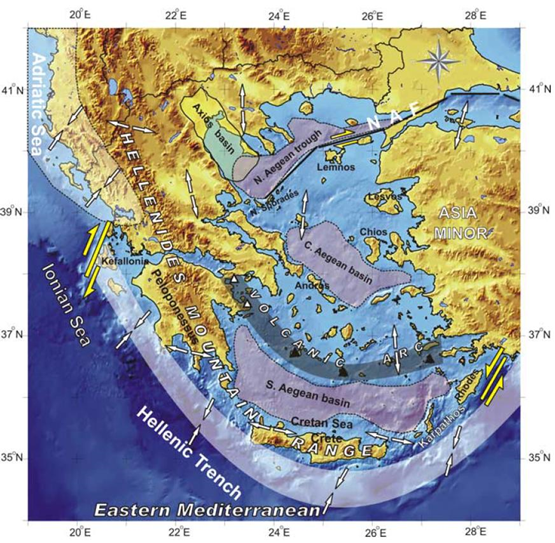Greece is classified as one of the most active regions of the Earth’s surface due to its intense geotectonic activity. The broader Aegean area and surrounding lands are a region characterized by high seismicity and complex tectonics controlled by the movement of convergent plate boundaries.
The closure of the Tethys oceanic basins in the region resulted in crustal thickening and consequent post orogenic extension and magmatism. From the Pliocene until recent times, the extensional processes continue in the broader Aegean area. The current geodynamic processes are controlled by two major structures, the Hellenic trench (along the active subduction of the African plate) and the North Anatolian Fault system, which terminates in the North Aegean Sea.

Neotectonic studies and the focal mechanisms of shallow earthquakes indicate that the active faults can be divided in the following categories: a) low-angle thrust and steeper reverse faults along the Hellenic trench b) E–W trending normal faults along the Greek peninsula, the back-arc Aegean area and western Anatolia; c) N–S trending normal faults along the Hellenic orogen and the overriding Aegean plate, mainly south of the Hellenic volcanic arc and d) strike–slip faulting in the Northern Aegean Sea, and western Greece Epirus, Ionian Islands and western Peloponnese.
